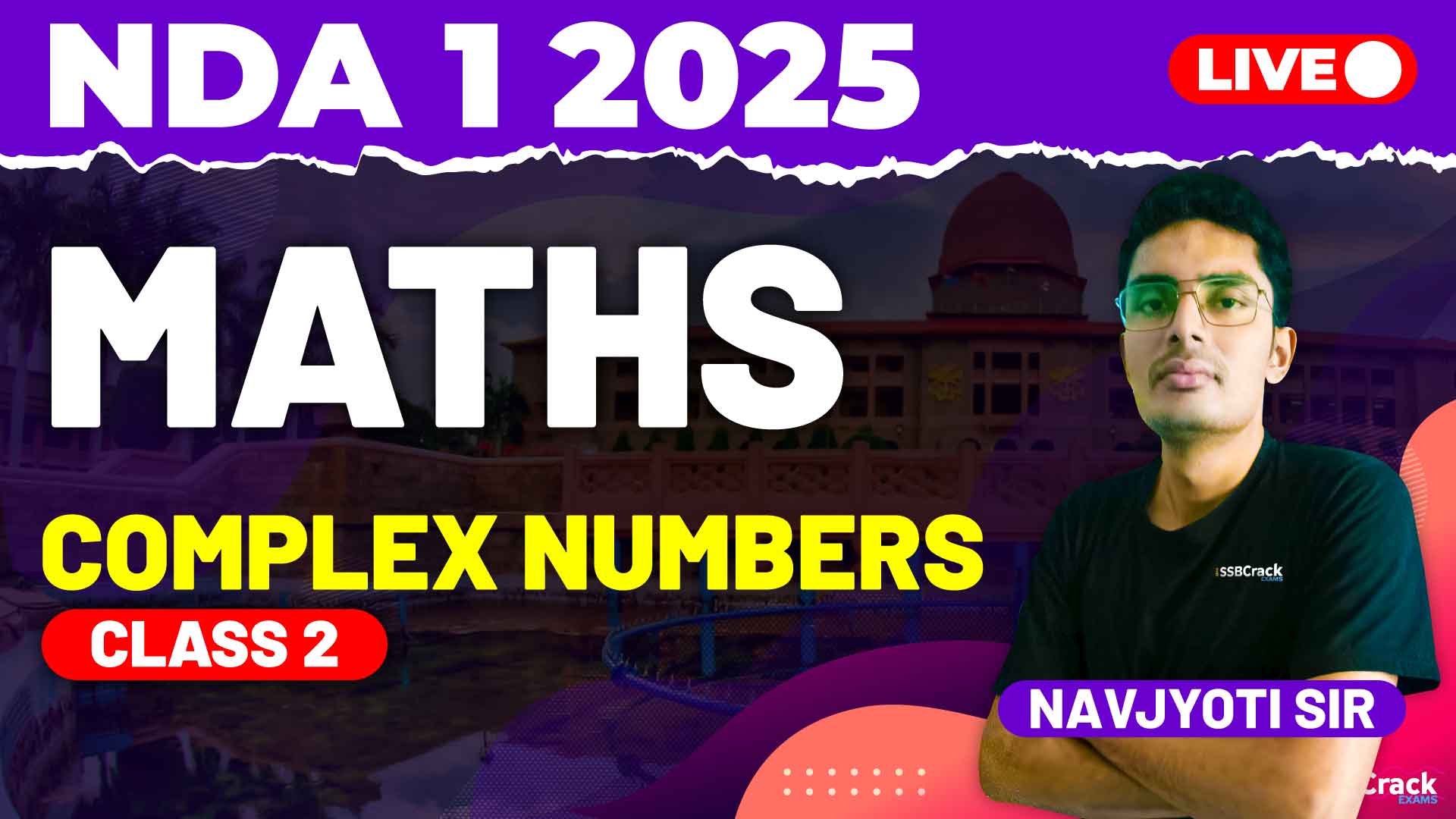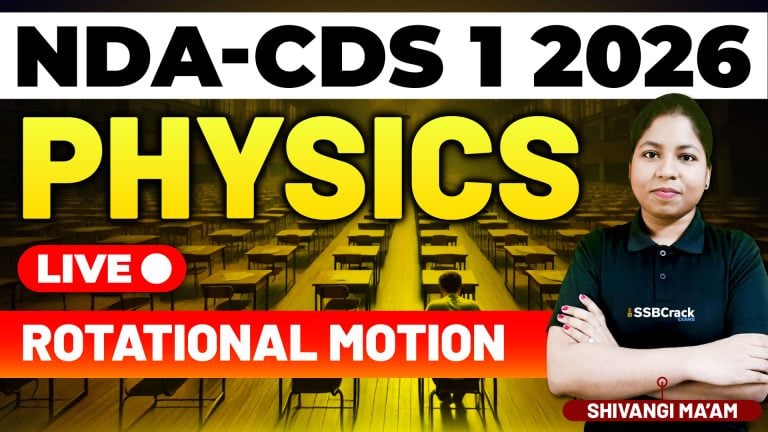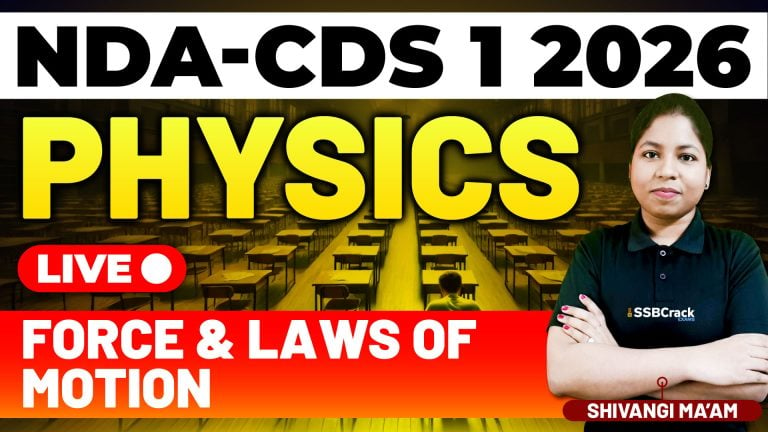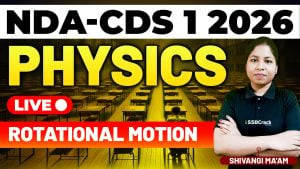In preparation for the National Defence Academy and Naval Academy (NDA-NA) Exam – Paper I (Maths), a recent class focused on the topic of Complex Numbers, particularly on advanced sub-topics such as the square root of a complex number, argument, polar form, and cubic roots of unity. These concepts are vital for mastering the subject of complex numbers, which is an important area of the NDA-NA syllabus.
This blog will summarize the key topics discussed during the class and provide strategies to effectively prepare for complex numbers, with a special focus on the sub-topics mentioned. The goal is to offer a simple and concise guide to help students understand and excel in this topic for the NDA-NA exam.
Key Concepts Discussed in the Class
1. Square Root of a Complex Number
The class began with a detailed discussion on how to find the square root of a complex number. While square roots are typically straightforward for real numbers, they become more complex when dealing with imaginary numbers. Students learned that finding the square root of a complex number involves decomposing it into its real and imaginary components. Understanding this is important because such questions frequently appear in NDA-NA exams, especially in multiple-choice questions (MCQs) where students are required to quickly find solutions.
2. Argument of a Complex Number
The argument of a complex number refers to the angle formed by the line representing the complex number in the complex plane (argand plane) with the positive real axis. The class explained how this concept allows us to interpret complex numbers geometrically, making it easier to visualize and solve problems involving rotations and angles. Students practiced identifying the argument of various complex numbers, which is essential for problems involving the polar form of complex numbers.
3. Polar Form of a Complex Number
A major portion of the class was dedicated to the polar form of complex numbers, which provides an alternative way of representing complex numbers. In this form, a complex number is expressed in terms of its modulus (distance from the origin) and argument (angle with the positive real axis). This form is particularly useful when performing operations like multiplication and division on complex numbers, as these operations become much simpler in polar form.
During the class, students explored how to convert between the standard form (real and imaginary parts) and the polar form of a complex number. This is a crucial skill, as many NDA-NA questions test the ability to switch between these representations efficiently.
4. Cubic Roots of Unity
The final topic of discussion in the class was the cubic roots of unity, which are the three complex numbers that, when raised to the power of three, result in one. These roots are essential for solving problems involving symmetry and periodicity in complex numbers. Students were introduced to the properties of these roots and how they form an equilateral triangle in the complex plane, a pattern that can be used to solve a variety of problems involving rotations and reflections.
The cubic roots of unity also provide a foundation for more advanced topics, such as solving higher-degree polynomial equations, which may appear in the exam.
Strategies for Preparing Complex Numbers for the NDA-NA Exam
To effectively prepare for the topic of complex numbers in the NDA-NA exam, students must focus on both conceptual understanding and problem-solving speed. Here are some strategies that can help in mastering the topic:
1. Build a Strong Foundation
Before tackling advanced topics such as the polar form or cubic roots of unity, ensure that you have a strong grasp of the basics of complex numbers, including their real and imaginary components, as well as operations like addition, subtraction, multiplication, and division.
- Practice identifying the real and imaginary parts of complex numbers in different forms.
- Solve problems that require basic operations on complex numbers to develop fluency.
2. Master the Square Root of Complex Numbers
Finding the square root of a complex number is a common question in the NDA-NA exam. Be sure to:
- Understand the method of decomposing a complex number into its real and imaginary parts to find its square root.
- Practice problems where you find the square root of different types of complex numbers, as this will help you become familiar with the process.
3. Practice with Polar Form and Argument
The polar form and argument are key concepts that make operations on complex numbers more manageable. To prepare effectively:
- Focus on converting complex numbers from the standard form to polar form and vice versa.
- Understand how the argument of a complex number relates to its position in the complex plane and practice solving problems that involve rotation or symmetry.
4. Learn the Properties of Cubic Roots of Unity
The cubic roots of unity have unique properties that simplify many problems involving complex numbers. Be sure to:
- Memorize the properties of these roots and how they are represented geometrically in the complex plane.
- Practice applying these properties to solve problems, particularly those involving symmetry or periodicity.
5. Solve Previous Year MCQs
As discussed in the class, practicing MCQs from previous NDA-NA exams is one of the best ways to prepare for complex numbers. These questions often test your ability to apply concepts like the polar form, square roots, and the properties of cubic roots of unity.
- Start by solving topic-specific MCQs on complex numbers, and gradually time yourself to improve speed.
- Review explanations for any mistakes to ensure that you understand the concepts behind each problem.
6. Take Mock Tests
Mock tests are an essential part of NDA-NA exam preparation, as they allow you to simulate the real exam environment. After taking each test, analyze your performance and focus on the areas where you can improve, especially in topics like complex numbers that require quick problem-solving skills.
- Take at least one mock test every week as the exam approaches.
- Review complex number problems in the test to ensure you are applying the correct strategies.
7. Focus on Geometric Interpretation
Complex numbers are not just algebraic; they have a geometric interpretation in the complex plane. Understanding this visual aspect can be a game-changer in solving problems, especially those involving the argument, modulus, and polar form.
- Visualize problems involving rotations, distances, and angles using the complex plane to better grasp their geometric meaning.
- Practice sketching complex numbers on the plane to reinforce your understanding of their geometric properties.
Conclusion: Mastering Complex Numbers for NDA-NA Success
The recent class on Complex Numbers for the NDA-NA exam covered crucial topics such as the square root of complex numbers, the argument, polar form, and cubic roots of unity. These concepts form a significant part of the NDA-NA syllabus, and mastering them is essential for exam success.
By following the preparation strategies outlined above—building a strong foundation, practicing operations, focusing on the geometric interpretation of complex numbers, and solving previous years’ MCQs—you can develop the skills necessary to tackle complex number problems with confidence. Regular practice, mock tests, and a focus on understanding the underlying concepts will ensure that you are well-prepared to excel in this topic during the exam.
Complex numbers may seem challenging at first, but with the right approach and consistent effort, they can become one of the most rewarding and scoring sections of the NDA-NA Maths paper.



















